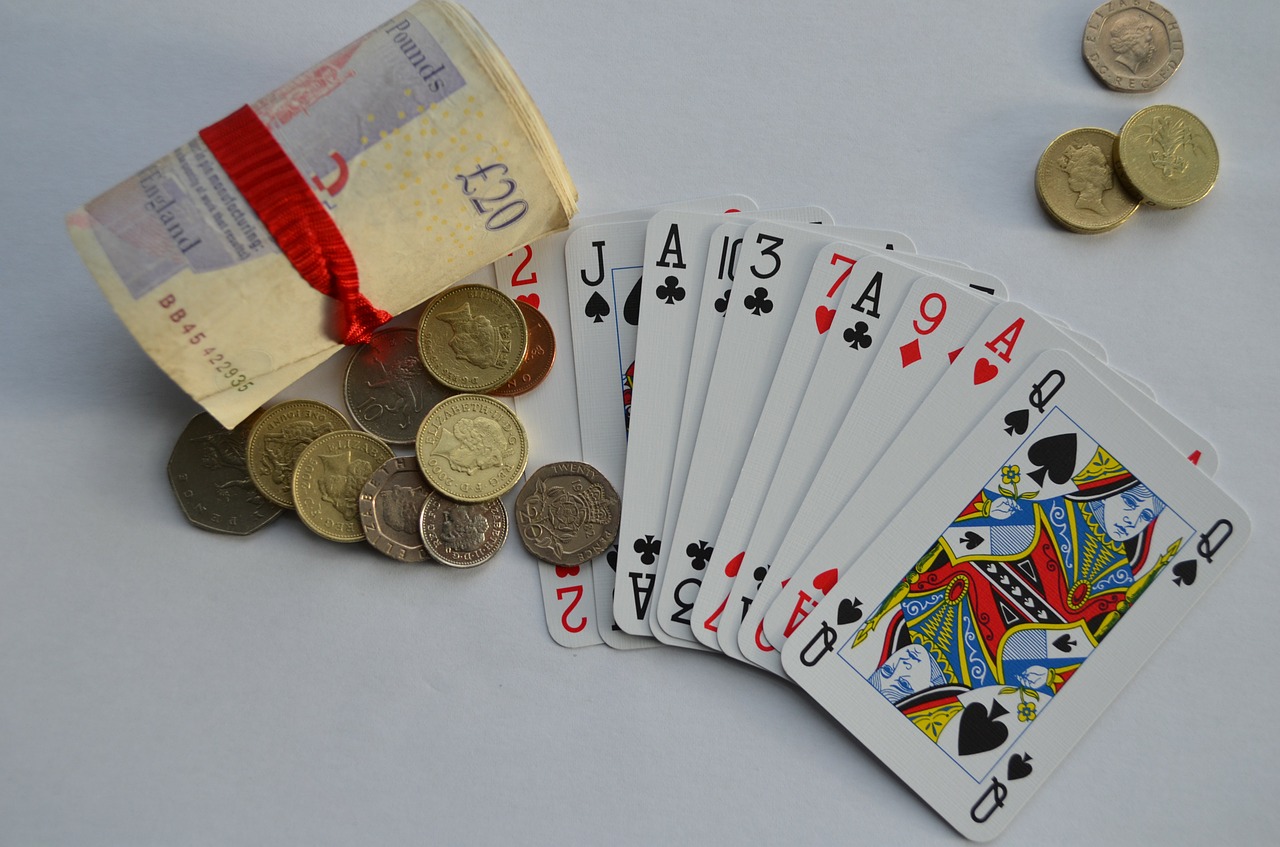Poker Tournament Tips: Strategies for Success in Multi-Table Tournaments

1. Introduction to Multi-Table Tournaments
Multi-Table Tournaments (MTTs) are one of the most thrilling and challenging formats in the world of poker. With the potential for huge prize pools and life-changing payouts, MTTs attract players of all skill levels, from beginners to seasoned pros. However, succeeding in MTTs requires a specific set of strategies and tactics that differ from cash games or single-table tournaments. In this article, we will dive into the world of MTTs and explore various tips and strategies that will help you improve your chances of success. Whether you’re a beginner looking to kick-start your MTT journey or an experienced player seeking to refine your skills, this guide will provide you with valuable insights to elevate your game in multi-table tournaments.
1. Introduction to Multi-Table Tournaments
Understanding the Structure and Format
Multi-table tournaments, also known as MTTs, are the Olympics of poker. They bring together players from all walks of life to compete for life-changing sums of money. In an MTT, hundreds or even thousands of players battle it out across multiple tables until only one remains victorious. The structure and format of MTTs can vary, but generally, players start with a fixed number of chips and the blinds increase at regular intervals. As the tournament progresses, players are eliminated, and tables are consolidated until the final table is reached. It’s a thrilling and challenging test of skill, luck, and endurance.
Key Differences between Cash Games and Tournaments
If you’re familiar with cash games, transitioning to tournaments can be a bit like switching from driving a sedan to a Formula One race car. While the basic rules of poker remain the same, there are some key differences to be aware of. In cash games, you can always reach into your wallet for more chips if you run out, but in tournaments, once your chips are gone, you’re out of the game. This dynamic creates a sense of urgency and requires a different strategy. In MTTs, survival is crucial, and the blind structure forces players to make decisions with limited time and resources. It’s a high-pressure environment that rewards adaptability and strategic thinking.
2. Preparing for Success: Bankroll Management and Tournament Selection
Managing Your Bankroll for Tournament Play
Before diving into the world of MTTs, it’s essential to get your bankroll in order. Bankroll management is like the foundation of a house – without it, everything can come crashing down. As a general rule, it’s recommended to have at least 30-50 buy-ins for the stakes you plan to play. This buffer helps cushion the inevitable downswings and ensures you don’t go broke in a single tournament. Remember, even the best players experience losing streaks, so be prepared for the ups and downs of tournament poker.
Selecting the Right Tournaments for Your Skill Level
Not all tournaments are created equal, and finding the right ones for your skill level is crucial. You don’t want to be the minnow swimming in a shark-infested ocean. Start by playing smaller buy-in tournaments with fields that match your experience level. As you gain confidence and improve your skills, you can gradually move up to higher stakes events. Additionally, consider the tournament structure and duration. If you’re a patient player who excels in deep-stacked play, look for tournaments with longer blind levels and larger starting stacks. Finding the right tournaments is like finding the perfect pair of poker sunglasses – it makes you look cool and helps you see clearly.
3. Mastering the Early Stages: Building a Solid Foundation
Playing Tight and Aggressive in the Early Levels
The early stages of an MTT are like the calm before the storm. Blinds are low, stacks are deep, and the field is packed with hopeful players. This is the time to build a solid foundation for success. Playing tight and aggressive is key. Avoid getting involved in marginal hands and focus on playing premium holdings. Aggressive betting and raising will help you build your stack and put pressure on your opponents. Just remember, patience is a virtue, and don’t get tempted to go all-in with that suited connector just because the flop looks promising.
Utilizing Position and Stack Sizes to Your Advantage
In poker, position is power, and the early stages of an MTT are an opportunity to exploit it. When you’re in late position, you have the advantage of seeing your opponents’ actions before making your own decision. This information can be leveraged to steal blinds, make well-timed bluffs, and capitalize on the mistakes of others. Additionally, pay attention to your opponents’ stack sizes. Those with shorter stacks may be more willing to take risks and shove all-in, while larger stacks might play more cautiously to protect their chip lead. Understanding these dynamics allows you to adjust your strategy accordingly and seize the right opportunities.
4. Navigating the Middle Stages: Adjusting to Changing Dynamics
Understanding the Importance of Chip Accumulation
As the tournament progresses into the middle stages, the blinds increase, and the pressure intensifies. It’s during this phase that chip accumulation becomes paramount. Building a healthy stack not only provides you with more ammunition to bully your opponents, but it also gives you breathing room when the blinds start to bite. Look for spots to pick up chips without risking your tournament life. Well-timed steals, resteals, and well-executed bluffs can help you climb the leaderboard and position yourself for a deep run.
Recognizing and Exploiting Opponents’ Tendencies
In the middle stages of an MTT, you’ll encounter a wide range of opponents with varying playing styles. Some players will be tight and cautious, while others will be loose and aggressive. Pay attention to these tendencies and adjust your strategy accordingly. Against tight opponents, you can loosen up and steal their blinds more frequently. Against aggressive opponents, you can trap them with strong hands and let them hang themselves. Adaptability is the name of the game, and being able to exploit your opponents’ weaknesses will give you a significant edge.
Remember, poker tournaments are a marathon, not a sprint. So lace up your poker shoes, stay focused, and embrace the unpredictable journey that awaits you. Good luck and may the flop be with you!5. Approaching the Bubble: Adjusting Strategy for Cashing Out
Identifying Bubble Dynamics and Adjusting Your Play
Ah, the dreaded bubble. It’s that pivotal point in a poker tournament where players are so close to making the money, they can already taste it. But tasting money won’t win you the tournament, so it’s important to approach the bubble strategically.
First things first, keep an eye on the dynamics at the table. Are players tightening up and playing more cautiously, afraid to bust out before the bubble bursts? If so, this is your opportunity to swoop in and steal those blinds and antes. Aggression becomes key here, as players are more likely to fold unless they have a premium hand.
However, don’t go overboard with your aggression. Remember, some players will still be clinging onto their chips for dear life, while others will be putting up a fight to secure a larger stack before the bubble bursts. Assess the situation carefully and adjust your play accordingly.
Survival Strategies for Short Stacked Players
If you find yourself short-stacked as the bubble approaches, fear not! There are still ways to navigate yourself to the money and beyond.
Firstly, tighten up your starting hand requirements. Play only premium hands and avoid speculative calls or unnecessary bluffs. Your goal is to preserve your chips and avoid unnecessary confrontations.
Secondly, look for spots where you can make a move and potentially double up. Keep an eye out for players who are also short-stacked or those who are playing too cautiously. These are the players you want to target with all your remaining chips.
Remember, in poker, fortune favors the brave, but it also favors those who pick their battles wisely. Be patient, stay focused, and you might just make it through the bubble unscathed.
6. Final Table Tactics: Playing for the Win
Transitioning from Survival Mode to Aggression
Congratulations, you’ve made it to the final table! Now it’s time to switch gears and shift from survival mode to aggression. At this stage, everyone is eyeing up that coveted first-place prize, so it’s crucial to be assertive and make your presence felt.
Start by taking advantage of your chip stack. If you’re one of the big stacks, use your chips as leverage to put pressure on shorter stacks. Force them to make difficult decisions by applying relentless aggression. Conversely, if you’re a short stack, look for opportunities to double up and stay in the game.
Keep in mind that final tables often have more experienced players who might try to exploit your aggression. Stay alert, be mindful of your table image, and adjust your play accordingly. Your goal is to accumulate chips and maintain your advantage, but be adaptable and ready to modify your strategy if necessary.
Adapting to Shifting Table Dynamics at the Final Table
The final table is a dynamic environment where chip stacks, player personalities, and playing styles can change rapidly. To succeed, you must be able to adapt to these shifting dynamics.
Pay close attention to your opponents’ actions and tendencies. Are there players who are consistently playing aggressively? Or perhaps some who only play premium hands? Use this information to tailor your strategy. Exploit those who are too loose or too tight, and be cautious against opponents who have caught onto your playing style.
Additionally, be aware of changing payout structures. As players bust out, the remaining payouts will shift. This can affect your risk/reward calculations and influence your decision-making. Stay updated on the prize pool distribution and make informed choices based on the changing landscape.
Remember, the final table is where champions are made. Be flexible, stay confident, and don’t be afraid to make bold moves when the opportunity presents itself.
7. Mental Game Mastery: Staying Focused and Avoiding Tilt
Developing a Strong Mindset for Tournament Play
Poker tournaments are not only a test of skill but also a test of mental fortitude. To succeed in the long haul, it’s crucial to develop a strong mindset that can withstand the ups and downs of tournament play.
Start by maintaining a positive attitude. Accept that there will be bad beats, coolers, and even runs of bad luck. Dwelling on these moments will only cloud your judgment and lead to poor decision-making. Learn to shake off the setbacks and focus on the bigger picture.
Another key aspect is staying focused. Tournaments can be long and tiring, both physically and mentally. Avoid distractions and stay engrossed in the game. Take regular breaks, stretch, and clear your mind. A refreshed and focused mind is your greatest asset.
Managing Variance and Dealing with Bad Beats
Variance is an inherent part of poker, and no player is immune to its effects. Bad beats happen to everyone, even the most skillful players. How you handle these moments can make all the difference.
Firstly, accept that losses are a part of the game and try not to let them affect your emotions. Remember, it’s the long-term results that matter, not individual hands or sessions. It’s important to separate the emotional roller coaster from your decision-making process.
Secondly, maintain your composure and avoid going on tilt. Tilting refers to playing recklessly or emotionally due to frustration or anger. Recognize the signs of tilt and take steps to control it. Take a deep breath, step away from the table if needed, and refocus.
Lastly, embrace variance and understand that it works both ways. Just as bad beats happen, you’ll also experience your fair share of lucky breaks. Trust in your skills, stay level-headed, and ride out the swings of fortune.
8. Advanced Techniques: Exploitative Play and Poker Tells
Exploiting Weaknesses in Opponents’ Play
Once you have mastered the fundamentals of poker, it’s time to delve into the realm of exploitative play. Exploiting weaknesses in your opponents’ play can give you a significant edge in a poker tournament.
Start by paying close attention to your opponents’ tendencies. Look for patterns and deviations from their standard strategies. Does a player always fold when facing a large bet? Or perhaps someone consistently overvalues weak hands? Exploit these tendencies by adjusting your play accordingly.
For example, if you notice a player is folding too often to continuation bets, increase the frequency of your bluffs. Conversely, if someone is calling too often, tighten up your ranges and focus on value betting with your strong hands.
Remember, exploiting weaknesses in opponents’ play requires keen observation and adaptability. Continuously reassess the table dynamics and adjust your strategy accordingly. Be the predator at the table and feast on the mistakes of others.
Recognizing and Utilizing Poker Tells to Your Advantage
Poker tells are subtle physical or verbal cues that can provide insights into an opponent’s hand or intentions. While they’re not foolproof, being able to recognize and utilize poker tells can be a valuable tool in your arsenal.
Start by observing your opponents closely. Look for any signs of discomfort, fidgeting, or changes in breathing pattern. These could indicate nervousness or a strong hand. Conversely, confidence, slow movements, or exaggerated composure might signify weakness.
As you venture into the exciting world of multi-table tournaments, remember that success in MTTs is a journey that requires continuous learning and adaptation. By implementing the strategies and tips discussed in this article, you’ll be better equipped to navigate the challenges posed by MTTs and increase your chances of achieving tournament success. Remember to maintain discipline, stay focused, and always be willing to adapt your strategy to the changing dynamics of the game. With time, practice, and a bit of luck, you’ll be well on your way to becoming a formidable force in the world of multi-table tournaments. Good luck and may the cards be in your favor!
FAQ
1. What is the difference between a multi-table tournament and a cash game?
In a multi-table tournament, players buy-in for a set amount and compete against a large field of opponents with the goal of accumulating chips and progressing through different stages to reach the final table. Cash games, on the other hand, involve players sitting down with their own money and being able to leave the table at any time with their winnings or losses. MTTs have a set start time and players are eliminated as the tournament progresses, whereas cash games continue indefinitely as long as there are players willing to participate.
2. How do I choose the right multi-table tournament to play?
Choosing the right MTT involves considering factors such as your skill level, bankroll, and personal preferences. It’s generally recommended for beginners to start with smaller buy-in tournaments with a large number of participants, as these tend to have a more forgiving structure and provide valuable learning experiences. As you gain experience and confidence, you can gradually move up to higher buy-in tournaments. Additionally, consider the tournament format, blind levels, and prize pool distribution to find a tournament that suits your playing style and goals.
3. How do I manage my bankroll for multi-table tournaments?
Bankroll management is crucial for long-term success in MTTs. As a general guideline, it is recommended to allocate no more than 2-5% of your bankroll for any individual tournament. This ensures that even a string of unfortunate outcomes does not deplete your entire bankroll. It’s advisable to have a separate bankroll dedicated solely to tournament play and to move down in stakes if necessary to protect your bankroll during downswings. Proper bankroll management allows you to withstand the inevitable variance in MTTs and gives you a better chance of experiencing sustainable success.
4. How important is the mental game in multi-table tournaments?
The mental game is highly important in MTTs. Remaining focused, managing emotions, and avoiding tilt are crucial for making sound decisions throughout the tournament. MTTs can be a rollercoaster of emotions due to the large field, long hours of play, and the pressure of competing for significant prizes. Developing mental resilience, staying patient, and maintaining a positive mindset are key to performing at your best and maximizing your chances of success in multi-table tournaments.

Looking to promote your sports betting and casino services effectively? AdHang offers Gambling SEO and specialized marketing services tailored to reach and engage your target audience. With a focus on strategic messaging and wide-reaching digital marketing tactics, AdHang can help elevate your brand and drive results in the competitive online gambling industry. Click here to discover how AdHang’s expertise can take your sports betting and casino marketing to the next level.









